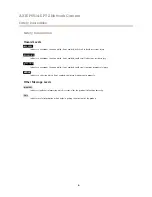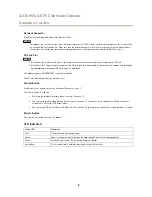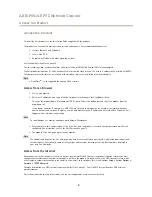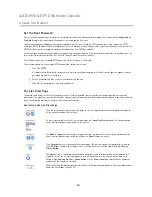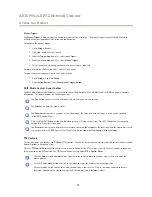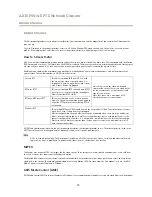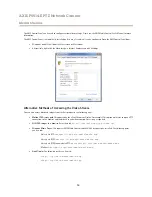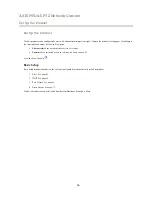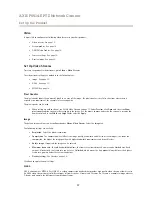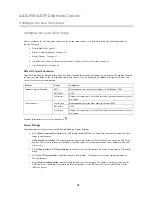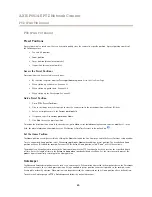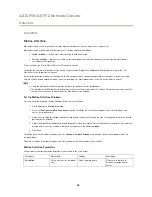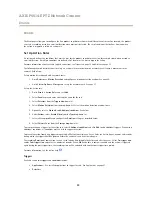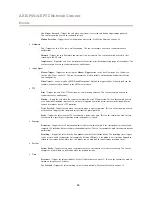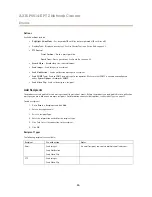
AXIS P5514-E PTZ Network Camera
Set Up the Product
Max gain -
Measured in decibels (dB), gain describes the amount of amplification applied to a signal, in this case the visual
information in the image. A high level of amplification may provide a better image in very low light situations. A high gain will also
increase the amount of image noise.
IR cut filter -
The IR cut filter prevents infrared (IR) light from reaching the image sensor. In poor lighting conditions, for example at
night, or when using an external IR lamp, set the IR cut filter to
Off
. This increases light sensitivity and allows the product to “see”
infrared light. The image is shown in black and white when the IR cut filter is off. Set the IR cut filter to
Auto
to automatically
switch between
On
and
Off
according to the lighting conditions.
Image Settings
Important
The autofocus behavior is affected by factors such as light conditions, contrasts in the scene, and objects moving in and out. In
these conditions or scenes, a manual focus could be preferable to enhance performance and allow the camera to focus faster.
Autofocus enabled -
Autofocus enables the camera to focus although the distance to different objects of interest is constantly
changing. Whenever the camera’s pan/tilt/zoom position is changed, the autofocus performs a search to find the ideal focus point.
Automatic focusing is enabled by default. If the focus position is changed manually using the focus bar, autofocus will be disabled
even if enabled in
Image Settings
. In this case, use the PTZ control panel to enable autofocus, see
page 11
. If required, the focus
control can be disabled under
PTZ > Advanced > Controls
.
Image freeze on PTZ -
Select
All movements
to freeze the image while the camera is moving during a pan, tilt or zoom operation.
Once the camera reaches its new position, the view from that position is shown.
Presets
freezes the image only when the camera
moves between preset positions.
Overlay
Overlays are used to provide extra information, such as forensic video analysis or during product installation and configuration.
Overlays are superimposed over the video stream.
An overlay text can display the current date and time, or a text string.
When using a text string, modifiers can be used to display information such as the current bit rate or the current frame rate.
For information about available modifiers, see
File Naming & Date/Time Formats
in the online help
.
It is also possible to display text when an action rule is triggered, see
Use Overlay Text in an Action Rule
.
Note
To enable overlays:
1. Go to
Video > Video Stream
and select the
Image
tab.
2. To include an overlay image, select
Include overlay image at the coordinates
. The overlay image must first be uploaded to
the Axis product, see
Overlay Image
.
4. To include date and time, select
Include date
and
Include time
.
5. To include a text string, select
Include text
and enter the text in the field. Modifiers can be used, see
File Naming &
Date/Time Formats
in the online help
.
6. Define text overlay characteristics in the relevant fields.
7. Click
Save
.
To modify the date and time format, go to
System Options > Date & Time
. See
Date & Time on page 43
.
20

